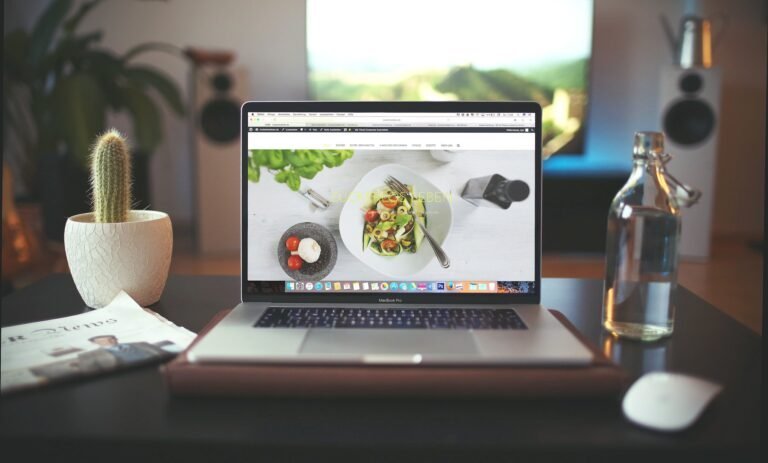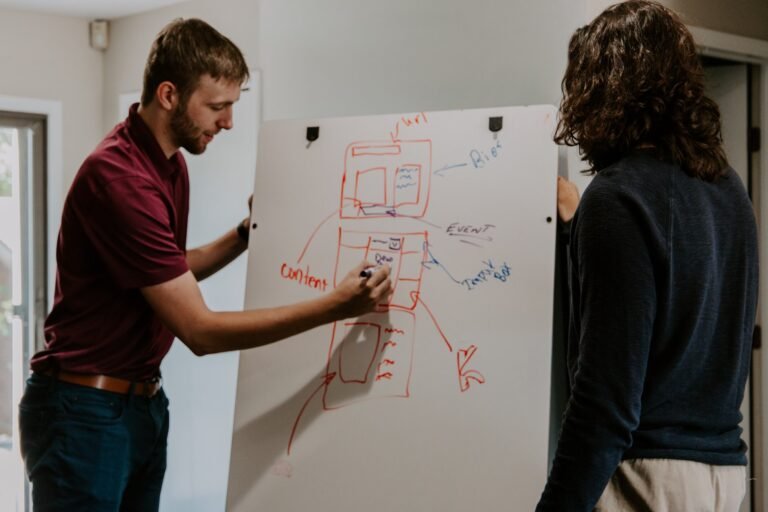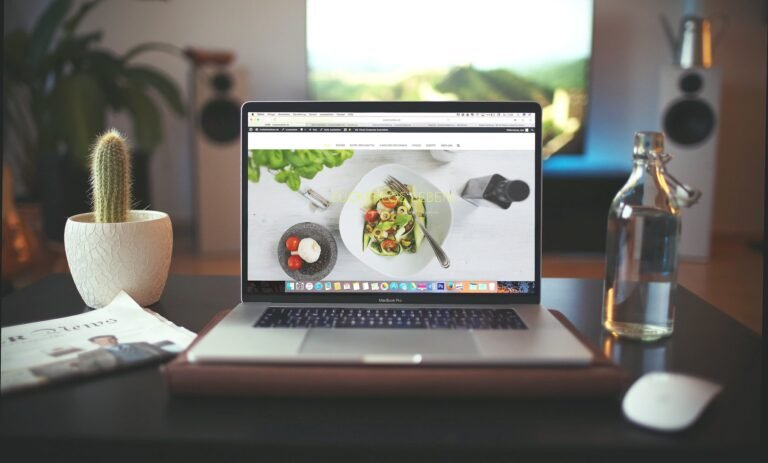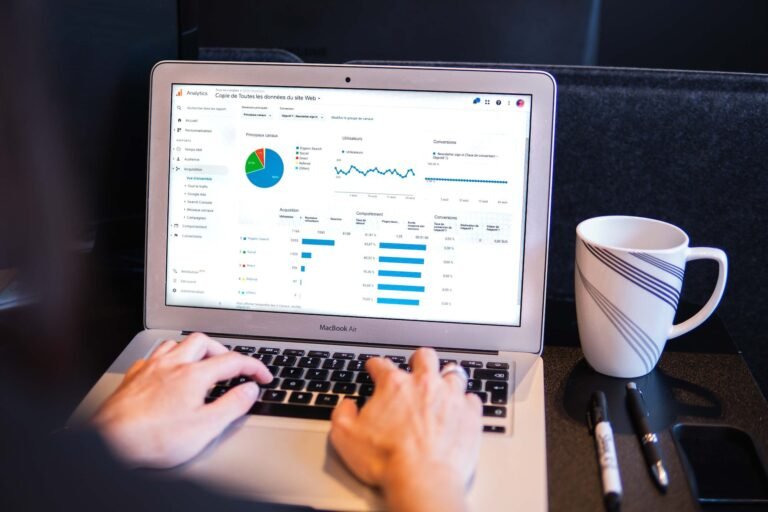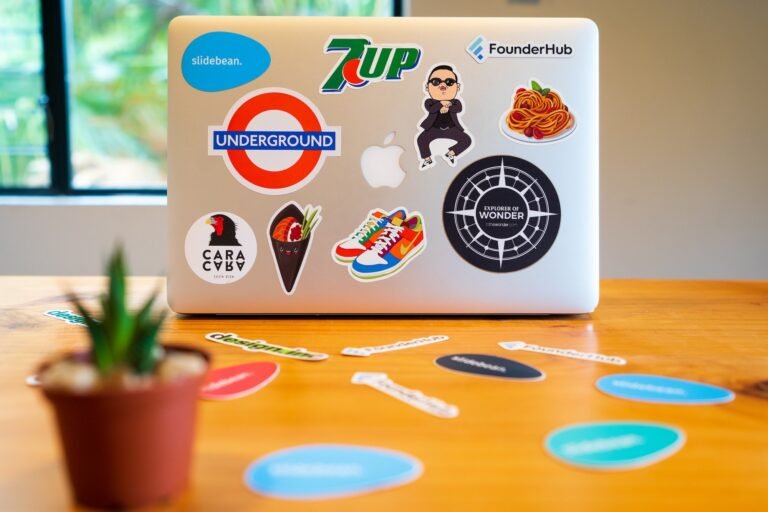Web Page Graphic Design: Transforming Pixels into Perspectives
Web design is akin to a digital alchemist's art, transforming base pixels into gold—engaging visuals that capture and hold the viewer's attention. In the vast expanse of the digital realm, these visuals serve as signposts, guiding users through a labyrinth of information, facilitating understanding, and creating memorable experiences. Let’s dive into web page graphic design!
This article aims to show new business owners how to create a memorable website with a dashing web page graphic design and the necessary tools to do it!

What is web design?
Web design is a multidisciplinary process that involves the creation and maintenance of websites. This practice encompasses several distinct elements such as graphic design, user interface (UI) design, coding, user experience (UX) design, and search engine optimization (SEO).
The primary goal of web design is to construct a website that is both aesthetically pleasing and functional, enhancing the user's online experience. Graphic design plays a crucial role in this process, as it involves the use of colors, fonts, images, and layouts to create an engaging and intuitive interface.
UI design, on the other hand, focuses on the navigational aspects of the website, ensuring that users can easily find the information they need.
UX design takes into account the overall experience of the user, striving to make the website as user-friendly and satisfying as possible.
Finally, SEO is a key component that helps increase a website's visibility in search engine results, thus driving more traffic to the site. The web designer's job is to optimize the website for maximum visibility and usability.

What makes a good web design?
A successful web design requires more than just great visual design. The design fundamentals include all these elements:
- A responsive layout that adapts to different screen sizes and devices;
- Well-designed navigation, with intuitive web pages and buttons that load quickly;
- High-quality digital designs that capture the attention of viewers;
- Engaging content that is easy to read and understand;
- A clear, concise call to action that encourages users to take the desired action.
In addition, web design should also be optimized for search engine indexing, with appropriate keyword tagging and metadata descriptions. This ensures that the website appears in the search engine results when a user searches for related topics.
Tips for Web Design Success
Here are some tips to help you create a successful web design:
- Start by creating an effective wireframe layouts, which outline the structure of your website. This will ensure that users can find what they need quickly and easily.
- Create brand colors and color palettes that are visually appealing and consistent across the entire website.
- Use typography to your advantage, selecting fonts that are easy to read and capture the theme of your website.
- Include high-quality visual elements that enhance your site's overall look and feel.
- Make sure your web design has enough white space to help break up the content and create a pleasant visual experience.
- Test your visual design on multiple devices to ensure that it looks good on all sizes and types of screens.
- Make sure your website is optimized for search engines, with appropriate keyword tagging and metadata descriptions.
- Finally, make sure all your content is up-to-date and relevant. Outdated content can quickly turn users away from your site.
What are the key differences between graphic design vs web design?
Both graphic design and web design are visually oriented fields. Therefore, they serve different purposes and require different skill sets.
Graphic design is the art of creating concepts with visual and textual elements. Digital projects are used in various media. Thus, including print projects, digital, and advertising. Graphic designers have a deep understanding of the fundamentals of design. Mastering design elements like typography, color theory, visual hierarchy, and layout is key to graphic design.
Common uses of graphic design include corporate design (logos and branding), editorial design (magazines, newspapers, and books), wayfinding or environmental design, advertising, web design, communication design, product packaging, and signage.
On the other hand, web design is a specific subset of graphic design that focuses on designing websites and web applications. Web design is not just concerned with aesthetics but also with the functionality of the website. This includes aspects like user interface (UI) design, user experience (UX) design, coding, and search engine optimization (SEO).
Web designers need to consider factors such as navigation, how easy the website is to use, and its ability to retain users. They must also ensure that the site is compatible with many different devices, browsers, and types of software.
Web designers use programming and web-building tools. They need to know HyperText Markup Language (HTML) to properly structure a website's content. Understanding how to use Cascading Style Sheets(CSS) is essential for formatting content in HTML web pages, and knowing JavaScript is also valuable.
In essence, while both fields involve design principles, graphic design is largely focused on aesthetics and visual communication. And web design is concerned with creating functional, user-friendly interfaces that are also visually appealing.

How do I create a graphic design for my own website?
Graphic designers create graphics for web developers and these are the steps they usually follow:
Step 1: Understand Your Target Audience
First and foremost, you need to understand who your audience is. This includes demographic information such as age, gender, and interests. For example, a website aimed at young tech enthusiasts might feature a modern design with bold colors and futuristic fonts, while a site for a law firm would likely opt for a more professional, understated design with a neutral color palette.
Step 2: Choose Your Color Scheme
The colors you choose for your website can greatly affect how users perceive your brand. For example, people usually associate blue with trust and reliability and is commonly used on banking websites. Moreover, green is typically linked to nature and health and is often used in sites related to wellness and environmental initiatives.
Step 3: Select Appropriate Fonts
Typography can significantly impact how your content is received. Serif fonts, such as Times New Roman, exude a traditional, respectable vibe, making them suitable for academic or journalistic websites. Sans-serif fonts like Arial or Helvetica, with their clean, modern lines, are a good choice for tech or design-oriented sites.

Step 4: Use Visual Elements Wisely
Visual elements are what give your website its unique personality and aesthetic appeal, so it's crucial to use them wisely. This may include images, videos, infographics, illustrations, and icons.
When selecting images for your website, ensure they are high-quality and relevant to your content. They should supplement your text, not distract from it. Remember, an image is often the first thing a user sees, so make it count.
Videos can be a dynamic way to engage your audience and convey complex information succinctly. However, they should be used sparingly to avoid slowing down your site's load time.
Infographics are an effective way to present data or complex information in a visually pleasing and easily digestible format. They can replace large chunks of text and make your content more engaging.
Illustrations and icons can add a playful or professional tone to your site, depending on the style you choose. Hence, they can be used to guide users through your site or highlight important information.
Remember, every visual element you add should serve a purpose and enhance the user experience. Just as importantly, ensure all visual elements are optimized for web use to maintain fast loading times. Lastly, always be mindful of accessibility, providing alt text for images and closed captions for videos to ensure your site is accessible to all users.
Step 5: Create Content That Is Engaging and Relevant
Content is key to creating a successful website. The content should be engaging, informative, and relevant to your target audience. Thus, it should also be optimized for search engine indexing so that it appears in the right search queries.
When writing website copy, make sure it's easy to read by breaking up large blocks of text and using short, concise sentences. Also, highlight keywords to help search engines find your content more easily.
What are web-building tools?
Web-building tools are software solutions that help you create a website without needing to manually code. Here are some of the most popular ones:
1. WordPress
WordPress is an open-source platform that offers a mix of simplicity for beginners and complexity for more advanced users. It's flexible enough to accommodate a range of website types, from blogs to online stores. It provides access to thousands of themes and plugins, allowing you to customize your site extensively. WordPress.org lets you host your site, while WordPress.com takes care of hosting for you.

2. Wix
Wix is a cloud-based web development platform that allows you to create hypertext markup language or HTML5 websites through a simple drag-and-drop interface. It's an all-in-one platform that comes with website designs, web hosting, and domain name registration. Its array of templates and design flexibility make it a good choice for small businesses, restaurants, or personal websites.
3. Squarespace
Squarespace is known for its sleek, visually appealing templates. Hence, making it a favorite among photographers, artists, and designers. It includes features like e-commerce functionality, SEO tools, and analytics. It's more restrictive than WordPress in terms of customization but offers a more straightforward, user-friendly interface.
4. Weebly
Weebly offers a drag-and-drop website builder that’s easy to use, making it a popular choice among beginners or anyone who needs a simple website in a hurry. It offers a range of templates, includes eCommerce functionality, and provides the option for custom HTML/CSS coding for more advanced users.
5. Shopify
Specifically designed for online stores and eCommerce websites, Shopify provides everything you need to start selling online. It offers a range of customizable themes, secure payment options, and full inventory management. It's a comprehensive tool for anyone looking to start an online business.
What are the graphic design tools?
Graphic designers use different software to create, edit, and manipulate visual content. Here are some of the most popular ones:
1. Adobe Photoshop
Graphic designers use Adobe Photoshop most widely among all graphic design tools. Because it is renowned for its impressive breadth of capabilities. It allows graphic designers or web designers to edit and manipulate photos, create digital paintings, design web and mobile graphics, and much more.
Photoshop's layer-based editing system provides flexibility and control over graphic elements, making it a popular choice for complex photo manipulations.

2. Adobe Illustrator
Adobe Illustrator is a vector-based design tool that's perfect for creating logos, icons, typography, and complex illustrations for any medium. Unlike raster graphics (which can pixelate upon scaling), graphic designers create vector graphics in Illustrator and resize designs without losing quality. This makes Illustrator an excellent choice for creating graphics that need to be used in various sizes and formats.
3. CorelDraw
CorelDraw is a vector graphics editor similar to Adobe Illustrator. It offers a suite of features for creating illustrations, logos, brochures, and other designs. CorelDraw stands out for its compatibility with unusual file formats, making it a versatile tool for a graphic designer working in a variety of industries.
4. Sketch
Sketch is a vector-based design tool specifically for Mac users. Known for its intuitive interface, web designers largely use Sketch for UI and UX design, especially for creating mobile and web interfaces. It offers powerful features like Symbols and Shared Styles that make reusing elements quick and consistent.

5. InDesign
Adobe InDesign is a desktop publishing and typesetting software used primarily for creating and designing printed material like magazines, brochures, posters, books, and other layout-intensive documents. It excels in many projects that require multi-page layouts with consistent formatting, offering tools for styling text, adjusting layouts, and managing complex digital assets.
6. Canva
Canva is a cloud-based design tool that beginners use for its user-friendly interface. It provides a wide array of predefined sizes for various types of web design and graphic design projects, from social media posts to presentations.
Canva's library includes millions of images, fonts, templates, and illustrations, making it a perfect tool for beginners or those looking for quick, beautiful designs.
What are the qualities of a good graphic designer?
A good graphic designer must possess a combination of different skills. These skills include:
Technical Skills
A graphic designer must have a deep understanding of the tools and processes involved in creating digital visuals. This includes an understanding of software programs such as Photoshop, Illustrator, InDesign, and CorelDraw. A good graphic designer also has a good eye for composition, color theory, typography, and layout.

Creative Vision
Graphic designers must have the ability to look at a project from different angles and come up with creative solutions. They should have an eye for detail, as well as an understanding of how visual elements contribute to the overall message.
Attention to Detail
Graphic designers understand that every element in a design—from color selection and typography to image choice and layout—has a purpose. Good graphic designers are meticulous and consider every minute detail to ensure coherence and harmony in their designs.
Communication Skills
Graphic designers often work with clients or a team, so they must be able to listen and understand the project requirements, articulate their ideas clearly, and accept constructive feedback.
Time Management
Graphic design projects often involve tight deadlines, so designers need to be able to manage their time effectively and prioritize tasks accordingly. This includes planning, setting realistic goals, and meeting deadlines. A good designer should also be able to multitask and juggle multiple projects at once.
Where do I find graphic designers and web designers?
RDZ Technology has a dedicated team of experienced graphic and web designers who specialize in creating stunning visuals for any type of project. Our design services include logo design, website design, digital illustration, content creation, product mockups, and more. We are committed to delivering quality work on time and within budget. Contact us today for all your marketing needs!

Conclusion
In conclusion, the success of your online presence can significantly depend on the quality of web and graphic design involved. Whether it's creating an engaging website or captivating visual designs, both require a unique set of skills and creative insight.
Let RDZ Technology be the key to unlocking the potential of your brand's visual identity. Our team of expert designers is ready to bring your vision to life, fostering an unforgettable digital experience for your audience. Get in touch with us today, and let's create something extraordinary together!


